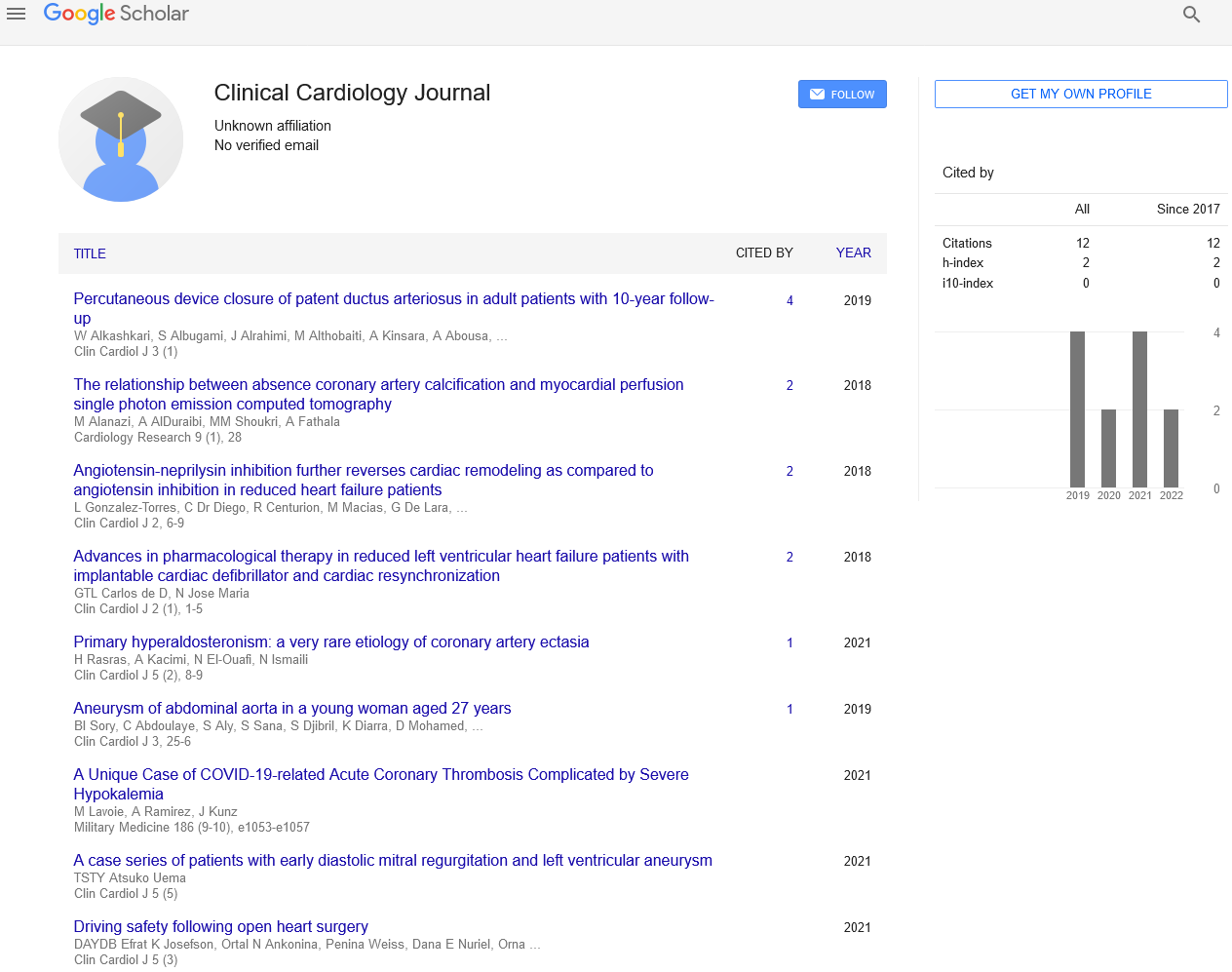Percutaneous device closure of patent ductus arteriosus in adult patients with very long term follow up
Received: 27-Mar-2019 Accepted Date: Apr 10, 2019; Published: 19-Apr-2019
Citation: Alkashkari W, Albugami S, Alrahimi J, et al. Percutaneous device closure of patent ductus arteriosus in adult patients with very long term follow up. Clin Cardiol J 2019;3(1):16-21.
This open-access article is distributed under the terms of the Creative Commons Attribution Non-Commercial License (CC BY-NC) (http://creativecommons.org/licenses/by-nc/4.0/), which permits reuse, distribution and reproduction of the article, provided that the original work is properly cited and the reuse is restricted to noncommercial purposes. For commercial reuse, contact reprints@pulsus.com
Abstract
Objectives: We report our 10-year experience with transcatheter closure of Patent Ductus Arteriosus (PDA) in adult using different closure devices.
Background: Transcatheter closure of PDA in adults can be challenging because of frequently associated comorbidities. Reports on immediate and intermediate-term results of PDA closure are excellent. This study aimed to provide the outcomes of PDA closure using different devices on long and very long term in adults.
Methods: Between September 2009 and December 2018, data were retrospectively reviewed from 27 patients who underwent transcatheter closure of PDA. Outcome parameters were procedural success, procedurerelated complications, evidence of residual shunt, and improvement in the signs/symptoms for which the procedure was performed. The mean followup interval was 72 months.
Results: A device was successfully implanted in 27 of 27 patients (15 females). Median age and weight were 24 years (range: 18-57 years), and 69 Kg (range: 53-102 kg), respectively. The mean PDA diameter was 4.1 ± 2.1 mm. Devices used were Amplatzer Duct Occluder (19/27), Occlutech Duct Occluder (6/27) and PFM Nit-Occlud (2/27). Doppler TTE demonstrated 92.6% of full occlusion at day one, rising to 96.3% at one month. Three procedure-related complications occurred with no death. Among symptomatic patients 26 (96.3%), there was marked improvement in symptoms. Among patients 22 (81.5%) for whom the procedure was performed to address LV enlargement, there was reduction or stabilization in LV size on serial TTEs.
Conclusions: Transcatheter closure of PDA in the adult patient appears to be safe and effective.





